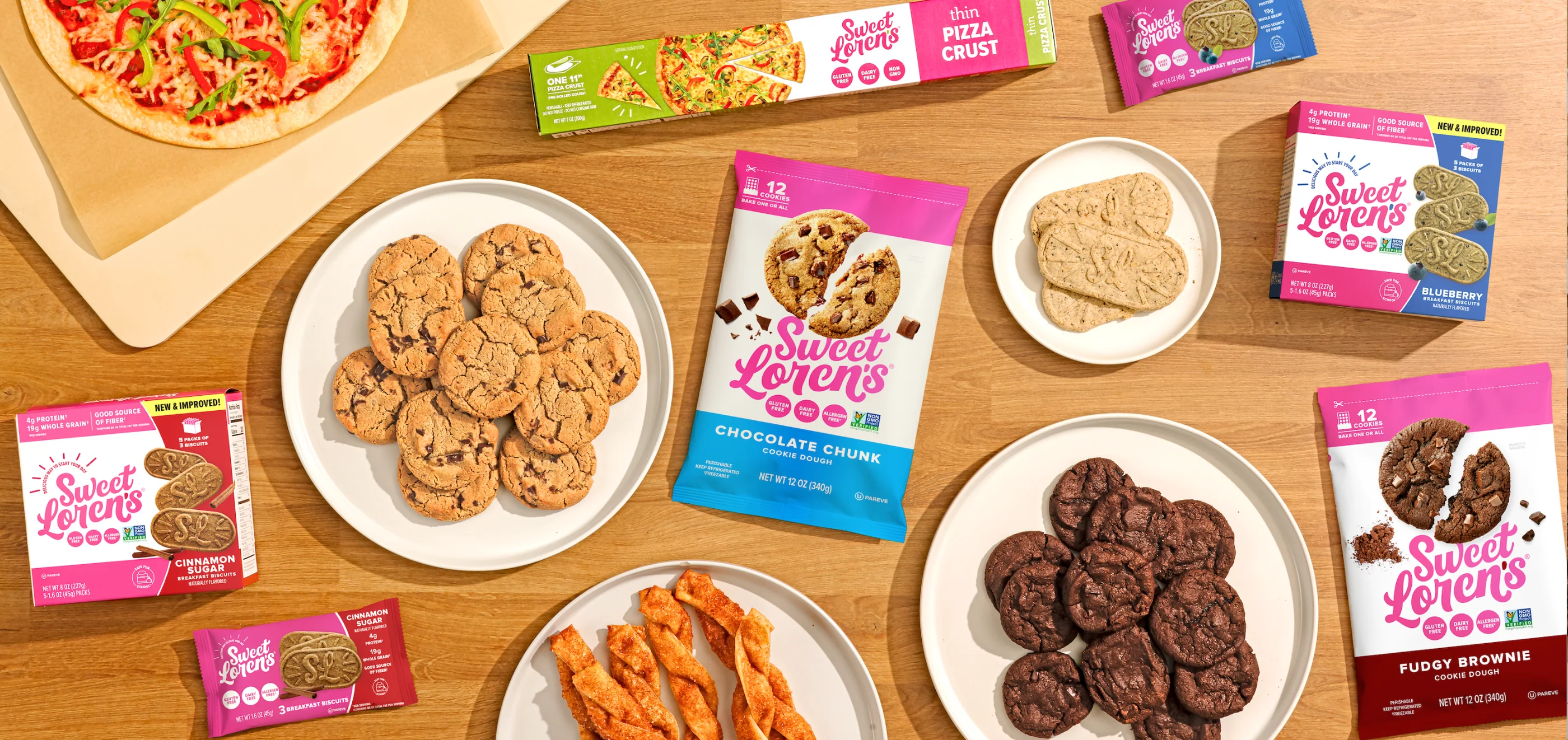By clicking “Accept”, you agree to the storing of cookies on your device to enhance site navigation, analyze site usage, and assist in our marketing efforts. View our Privacy Policy for more information.
A Must-Try Habit for Brands Selling DTC: Lightweight Customer Conversations
It's Time to Start Having Customer Conversations
Brands selling direct-to-consumer via ecommerce can surface valuable insights by having 1-on-1 conversations with their customers. These conversations should be happening every week.
Having customer conversations is not about:
- customer service and responding to customer inquiries or complaints
- sending out customer surveys and looking at the results
- doing extensive customer interviews using an outside research firm
This is about having regular, 15-to-30 minute conversations with customers, preferably led by the people who make the decisions within the company.
The following is a brief guide to making customer conversations a habit that can stick and how these interactions can deliver value for the business. We've written this to target founders, CMOs, VP/Director-level folks, and any other decision-makers who may be getting filtered and highly curated information daily but haven't spent much time interacting directly with customers. There's value to creating time for these conversations, and it doesn't have to be time-consuming or complicated.
Getting Started: Make It Easy on Yourself
Before rolling it out to the entire team, start this as a solo effort. It'll be much easier to bring others on board and to convince them of the habit if you've become consistent at it already. We suggest starting with a goal of 2 customers.
Pick two customers from your database. Ask whoever manages your CRM for two random contacts. Depending on the volume of your business, maybe you provide some constraints like only those who bought in the last 90 days or only those who ordered domestically (especially if you want to avoid off-hour calls with international customers). Make sure these contacts have opted in to receive marketing messages. Get their full name, location (for time zone purposes – not their full address), email, and details of their order history.*
Craft an outreach message and think of an attractive incentive, perhaps a discount code for a certain dollar amount off on their next purchase or a $25 Amazon gift card, whatever is easiest to get approved and most cost-effective for the business. Here's a sample script you can use:
Hi Charlotte,
I'm June Platt, founder of HiFi Beauty. First of all, I'd like to thank you for being our customer. You purchased our HiFi All-Day Moisturizer in February, and we hope you're happy with your decision.
I'm reaching out because I'm hoping to learn more about your experience with our brand and how we can better serve our customers.
I'd love to have a 15-minute conversation with you via a Zoom call. As a token of our appreciation for taking the call, we'd love to offer you a $25 discount on your next HiFi order. You can select a time at this link [Calendly or similar type of tool] that works for you. Feel free to say no, absolutely no pressure.
Please let me know if you have any questions, and if you'd like to stop receiving any marketing communications from us, please click here to unsubscribe [you can get an unsubscribe link from whoever handles your CRM].
Thank you,
June Platt
Tweak as necessary depending on the responses you get. The hit rate should be pretty high, at least 25%. Get in the habit of sending two of these every week. Even if you have a long list of customers already, just start with sending out two. You can always increase the volume later once you get an efficient system down.
The Conversation: Critical Questions to Ask
Below are some critical starter questions that can help open the door to interesting answers. Over time, you may develop your own versions and sub out for more relevant ones.
- Question: In as much detail as possible, can you describe when you first came across our product and started to consider buying it? Where did you go to learn more or find additional information?
Why ask: Having the customer recall their first interactions with the brand can reveal a lot about how and why they came across it in the first place and what kind of problem they were trying to solve in their lives. Asking where they found out more about the brand can also reveal aspects of their customer journey – was it word of mouth or did they see it on a channel that you're unaware was even a factor for customers?
- Question: What other options did you consider before deciding on our product? Was there a product or solution already in place that you were looking to replace or make the switch away from? What were the factors that could have persuaded you to go a different direction? What were factors that pushed you to ultimately buy the product?
Why ask: You can pace these questions strategically as you get answers. The point here is to learn more about the "real" competition your product is up against and how the customer added up the pros and cons to ultimately make a decision in your favor. It's very possible that competition could have been another brand selling a similar product, complete inaction (doing nothing), or a solution that doesn't even sound like a competitor. For example, in the case of a moisturizer product, an unseen competitor may be YouTube DIY videos that teach people how to use natural ingredients at home (e.g. cucumber or avocado) to moisturize.
- Question: Can you recall the day you received the product? How did you feel when you first opened the box? What do you remember about using it for the first time?
Why ask: This is an opportunity to get a sense of the first impression the brand makes on its customers. Understanding the sense of anticipation, how the unboxing experience unfolded, and what the initial contact with the product was like can provide insights for improving the customer's experience. Depending on the answers, you can dig deeper and ask if there were any points of confusion or any messaging and communications that they felt were helpful leading up to and after that initial first physical contact with the product.
- Question: In which ways are you using the product? Are there ways in which you’re using it differently than what it was intended for?
Why ask: Product usage, especially in a manner that satisfactorily solves a customer's problem on a consistent basis, is one of the surest ways to develop loyalty. These questions try to get at how the product factors into the customer's life. Is it being used the way it was intended by the product's creators? Is there some alternative use case that wasn't intended? And is the customer even using the product at all? Or if not, when and why did they stop using it? What did they switch to? Use this question to not only to see if the product has been effective, but if not, to see how and why it got displaced.
You'll have to prioritize which questions to ask and figure out how deep you can go given the time constraints of these short conversations. Chances are, any one of these questions can end up taking up an entire 15 or even 30 minutes. You may opt to go for 45-minute or 60-minute calls occasionally if you want a deeper dive, but to make this a sticky habit, it's best not to expend too much time and energy all at once.
Making Use of Conversation Takeaways
There are a few different ways you can go about extracting takeaways from these conversations:
- Take notes throughout the conversation as best you can
- Ask for permission to record the call, and after the call, review the call to take notes (or leverage a transcripting tool or an assistant)
- If you're not much of a notetaker during conversations, recall the top few items that most resonated and jot them down as bullets somewhere
What matters most is that you have ongoing documentation of these conversations. Over time, as you have weekly conversations, the takeaways will start to pile up and you'll start to notice patterns. Once you reach a certain critical mass–perhaps 10 conversations–it could be worthwhile to revisit your written takeaways and start to add some tags or labels to help sort and filter more easily.
For example, if a customer brought up issues with product instructions and lack of clarity in how to use the product, you might label this as "product experience" or "customer education". If a customer was extra chatty about all kinds of competitor brands they considered during the consideration phase, you might add the label "competitors" or "customer journey".
Later on, as the volume of conversations continues to grow, the labels can save you a lot of time in pulling up conversations that contained relevant themes that you need qualitative data for.
When it comes to how these takeaways can be used for the business, the key is to share often and broadly. Here are some ideas:
- A weekly memo to your team sharing some of the takeaways from your conversations and what opportunities or blindspots the team should potentially consider
- A brief discussion with your leadership or department team highlighting your takeaways; if others are also engaging in regular customer conversations, this can be a time and space to trade stories and align on broader takeaways
- A monthly or quarterly presentation compiled from all your conversations highlighting certain patterns or repeated comments from customers that signal certain issues or challenges facing the brand as well as praise and things to "keep on doing"
- A cache of qualitative data and anecdotes that can be sprinkled into any of your strategy plans or internal communications, used to support certain discussions or to push a certain agenda (e.g. we need to bulk up our CX infrastructure, here are some stories of customers having a tough time getting in touch with our reps)
As with the conversations themselves, you'll have to experiment with different ways of using these takeaways.
Customer Conversations: Limited Downside, Great Upside
If approached with preparation, energy, and curiosity, customer conversations have very limited downside.
You may get some reticent people who give curt, one-word answers and are done talking in a few minutes, but these kinds of conversations can be seen as useful feedback as well. Perhaps they may prefer writing long email answers versus talking on a Zoom call, and so you might follow up on an unsatisfactory conversation with an email asking for written answers. Whichever way a conversation goes, embrace all feedback as information that can inspire new experiments.
The upside of customer conversations go beyond the takeaways that can be shared with the organization. As a leader on the team, the act of connecting personally with customers on a regular basis can have far-reaching impact. Every person you chat with can potentially become a loyal advocate for the brand. They will feel heard and they will see that the brand is backed by real and caring people. These are sentiments that are very hard to manufacture via marketing or PR.
The act of connecting 1-on-1 with customers is also an opportunity for you to practice how you represent the brand. The way you present yourself, the way you ask the questions, and the way you treat the customer are all touch points that can continue to be refined and evolved as you get more reps in. Putting yourself in the shoes of the customer to see through their eyes can help you tighten up your conversation game.
Over time, customer conversations can spread from a solo habit that you've modeled to a smaller group activity, to a departmental activity, to perhaps a team-wide activity. Systems and processes will have to be put in place as the effort scales and keeping conversations energetic, engaging, and authentic will be very challenging. But before getting ahead of ourselves, give these conversations a try at very micro, atomic level, and see how powerful they can be.
* Your organization may have certain data privacy and access restrictions that make it hard to get random contacts. If this is the case, work with your CRM or IT team to find ways to contact customers in a manner that is compliant with the company's policies. For most smaller businesses, this information is directly available by logging in as an admin on Shopify or Klaviyo. As mentioned above, please make sure the customers you reach out to have opted in to receive marketing communications and also offer to unsubscribe them from subsequent communications in the outreach email.
Posted on
February 21, 2022
Interested in collaborating on a project?
Get StartedLatest Updates

Bringing a Cohesive Holiday Experience to the McCormick Shop
News

Anthony’s Goods Grows Revenue 22% With New Site and Media Strategy by Barrel and WITHIN
News

Inspiring Mealtime Creativity With Cabot’s New Recipe Experience
News

Bringing Sweet Loren’s Joyful Rebel Brand to Life Online
News

GEO: The Next Frontier for CPG Brands in the Age of AI Search
Insights

Fueling while on earth's Growth with Christian McCaffrey On Board
News

How We Leveraged User Testing to Redesign McCormick’s Recipe Experience
News

Khloud Expands Its Product Line With Single-Serve Popcorn Packs
News


